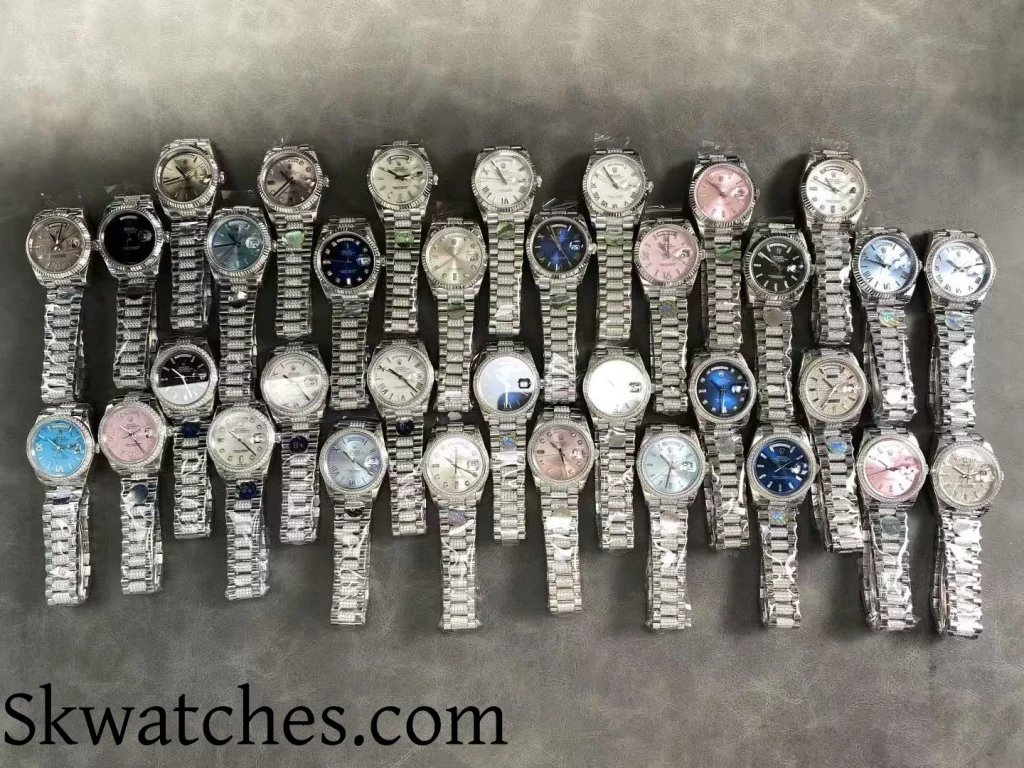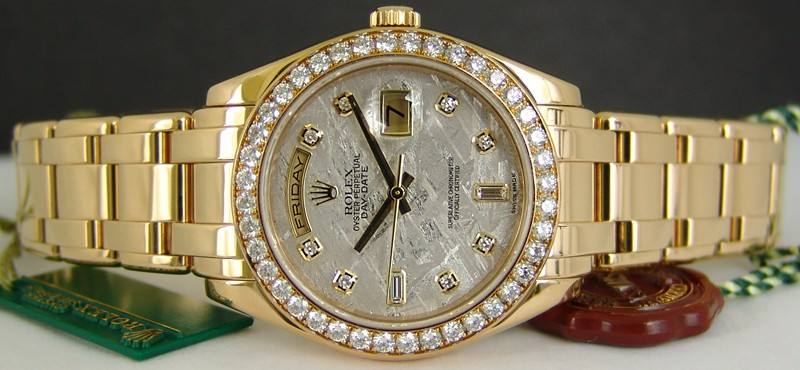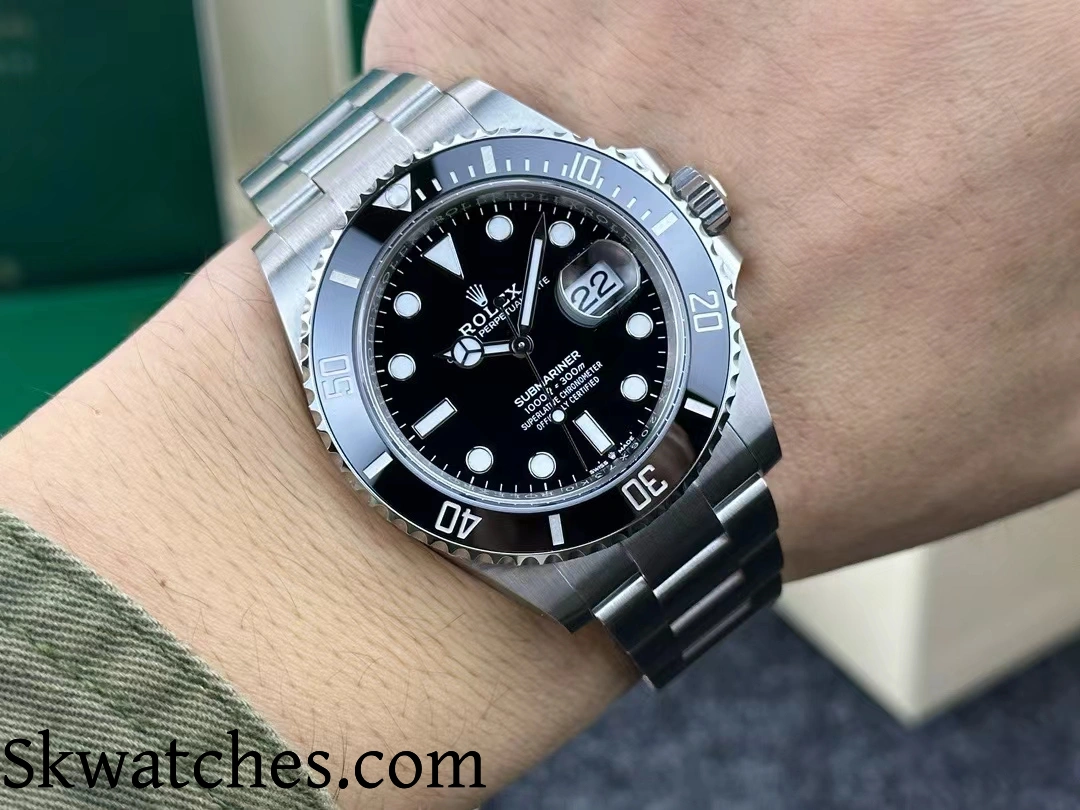1990s: The era of inferior quality
In a secret workshop in Shantou, Guangdong, the first generation of Rolex replicas was born in a funny way. These replicas, known as “Hong Kong watches”, were made of cheap brass and gold-plated. The word “Rolex” on the dial was often misspelled, and the most exaggerated case was even a misprint such as “Rolax”. Southeast Asian tourists at the time would buy these “souvenirs” for $20-50, and they were often confiscated during customs inspections when they returned home.
Interestingly, Rolex replicas of this period gave rise to a group of collectors. Some misprinted watches were sold at three times the original price on the dark web market because of their extremely small production. Among a batch of confiscated imitation watches auctioned by Thai customs in 1998, there appeared a rare version now known as the “Smiling Crown” – the crown pattern on its logo unexpectedly showed a grinning expression.
2000-2005: Hong Kong-made Improvement Period
With the transfer of manufacturing industry after Hong Kong’s return, Shenzhen became the incubation center of the new generation of Rolex replicas. The most significant progress in this stage was the use of 316L stainless steel in the case, which made the weight of the watch body close to the original. The “gold coil” technology that appeared in 2003 solved the color cast problem of the calendar window. This breakthrough allowed Hong Kong trader Andrew Chen’s monthly sales to exceed 10,000 for the first time.
But the products at this time still had obvious defects: the shaking problem of the second hand when moving (the industry calls it the “butterfly effect”), and the duration of the luminous paint was less than 1/3 of the original. In 2004, “Asian Watches” magazine conducted a blind test, and professional watchmakers could identify the flaws of these replicas from 3 meters away.
2006-2012: Swiss Movement Revolution
Two incidents significantly influenced industry dynamics: the patent run-out on the ETA movement in 2006 and the financial crisis of 2008, which caused Swiss watch factory employees to lose their jobs. The lost skilled workers were hired by replica watch factories in Dongguan with high salaries, bringing real Swiss technology. The “Seagull ETA” hybrid movement born during this period has an accuracy of ±5 seconds per day, which has met the Swiss Observatory certification standards.
In 2010, a batch of Submariner replicas seized by Guangzhou Customs used 904L aerospace steel for the first time, shocking the entire industry. The orderer of this batch of products was a Russian upstart, who required the replica watches to pass the extreme environment test of Arctic expeditions. This incident prompted Rolex to fully upgrade its anti-counterfeiting technology in 2012.
2013-2018: The rise of super replicas
The popularity of 3D scanning technology has brought replica precision to the micron level. In 2015, the Daytona replica launched by the Noob factory achieved full synchronization of the chronograph movement functions for the first time. Its development process was filmed into a documentary “The Master of Replicas” and aired on Netflix. Products at this stage began to show “over-perfection” – the workmanship of some replicas even exceeded the tolerance standards of the genuine production line.
The “switch incident” during the 2017 Geneva Watch Fair became a turning point for the industry. The GMT-Master II worn by a Middle Eastern collector was confirmed to be a replica from the Clean factory, which prompted Switzerland to set up a special “anti-counterfeiting task force”. Ironically, this incident caused the number of orders for super replicas to surge by 300%.
2019 to present: the era of nano-level replicas
The intervention of artificial intelligence has brought replicas to the molecular level. In 2021, VS used deep learning to analyze the wear data of 2,000 genuine watches. Their Submariner replica will “age intelligently” and simulate the wear marks that match the age of the buyer. Even more amazing is the “bioceramic” technology that appeared in 2023. This material will produce subtle gloss changes with body temperature like the real thing.
Modern top Rolex replicas have formed a unique ecosystem: professional appraisers provide “replica certification”, insurance companies have launched “replica watch loss insurance”, and even second-hand trading platforms designed specifically for replicas have appeared. According to unofficial statistics, the number of “super replicas” currently circulating in Europe and the United States may have reached 1/8 of the originals.
Global Market Evolution
From the hidden salons on Fifth Avenue in New York to the open-air stalls in Dubai Gold Market, the sales network of Rolex replica is surprisingly differentiated. American buyers are most concerned about the performance of the movement and are willing to pay a 40% premium for the accuracy of the time; European collectors are obsessed with the aging process, which has spawned a special “antique replica” market segment; Middle Eastern customers require “rich versions” inlaid with real diamonds, although this has completely deviated from Rolex’s design philosophy.
The latest survey in 2024 shows that 28% of global replica consumers are authentic owners who buy replica watches for high-risk occasions. This phenomenon has spawned the so-called “hybrid collectors” group, who will auction authentic products at Christie’s and bid for limited edition replicas on the dark web. To some extent, Rolex replica has developed a product culture independent of the authentic.




Thank you very much for sharing, which made me understand the history of replica watches.
This article brilliantly shows the technological evolution of the replica watch industry, from the crude “Rolax” to the nano-level replica, which can be called a history of the miniature industrial revolution.
Just want to say your article is as astonishing. The clearness on your put up is simply nice and i can suppose you are an expert on this subject.
Well along with your permission let me to seize your RSS feed to stay updated with imminent
post. Thank you one million and please keep up the enjoyable work.
Nice answers in return of this issue with solid arguments and explaining all
concerning that.